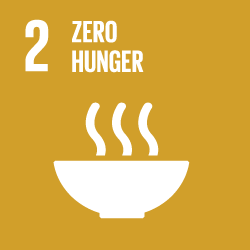Loading...
Progress towards Zero Hunger
read more
million
Hungry people in the world in 2016
million
People assisted by WFP with food or cash

Goal 2 – Zero Hunger – of the Sustainable Development Goals (SDGs) is both a collective endeavour by the international community and an individual commitment by all national governments. By 2030, no one – woman, man, girl or boy – should go hungry. The ambition is vast. The task is monumental. And as the world’s leading body dedicated to fighting hunger, our role – with partners in government, sister UN agencies, NGOs and the private sector – is crucial. The full Agenda 2030 alignment will only take effect from 2017. But our 2016 results already show progress against four of Goal 2’s targets: